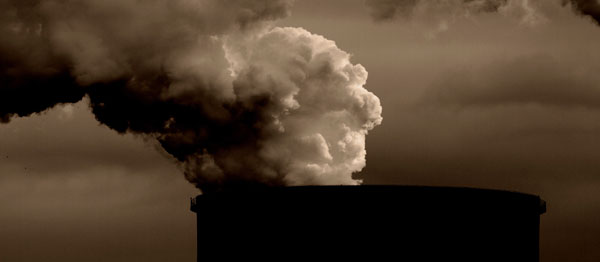Earlier this week we put on our website a page that explains the best estimate of what percentage of global warming pollution comes from deforestation. The percentage — 10 percent — updates the consensus estimate of 15 percent that scientists and organizations, including UCS, released at the Barcelona climate conference in November 2009. It also explains why the decrease only represents progress in reducing deforestation to a limited extent.
How can that be? The number is down by a third: doesn’t that mean we’ve reduced deforestation? Not necessarily. Percentages can be more complicated little numbers than they seem!
First of all, as we all learned in elementary school, figuring percentages is making one number out of two — a numerator and a denominator. So a percentage can go down either if its numerator drops, or if its denominator grows.
It turns out that a substantial part of the decrease in this percentage in recent years comes from the growth of its denominator, which is the total emissions from all sources. That includes deforestation, agricultural emissions such as the methane emitted by cattle, and most of all, the emissions that come from burning fossil fuels. Fossil fuel emissions have been going up steadily, so the denominator has grown and the percentage has dropped. But an increase in global fossil fuel emissions is hardly good news.

More fossil fuel emissions means a bigger denominator and thus a smaller percentage.
A second complication is that some of the drop in the numerator doesn’t come from real changes, but rather from better estimation. This reflects the new scientific consensus, announced a year ago at the climate negotiations in Qatar, that about 3.0 gigatons of CO2 emissions annually came from deforestation during the period 2000-2005. That figure — which represents gross emissions, not adjusted by “netting out” the carbon sequestered by forest regrowth — is a considerable improvement on previous estimates. But it’s not evidence of real-world change, just better science.
A third issue, and one that complicates things considerably more, is that to validly calculate a percentage, you need to be measuring comparable things with both the numerator and the denominator. If, for example, you divided U.S. wheat production in 2012 by world wheat production in 2005, that wouldn’t be a valid estimate of the proportion of the world’s wheat that the U.S. produces — for either 2005 or 2012. Or, if you divided U.S. wheat production by the world’s production of wheat, corn, and rice, that wouldn’t be a fair way to estimate either how much of the world’s wheat we produce, or how much of the world’s cereal grains we produce. You have to be dividing apples by apples.
This problem is important for the percentage of emissions from deforestation, because there are several possible choices for both numerator and denominator. Regarding date, for example — do we use the 2000 – 2005 numbers, for which there’s a solid consensus, or the most recent data, for which there isn’t yet? Do we include just CO2, or the other greenhouse gases (methane, nitrous oxide, etc.) as well? Do we confine the estimate only to deforestation, or include other forest-related emissions such as those from forest degradation and the clearing of peat swamps? Putting together all the combinations of date, gases, emissions sources, etc., there turn out to be at least 16 possible ways you could calculate the percentage.
We did each of those calculations, but we also applied some criteria to the choice among them. These included the comparability of numerator and denominator, as explained above, but also the certainty or uncertainty of the estimates, and their completeness (do they include everything reasonably relevant to the question?). Finally, we asked whether they’re up-to-date. After all, when we say “the percentage of emissions from deforestation is……”, it seems like the word “is” ought to mean that we’re talking about “right now” or at least “pretty recently,” not “ten or twenty years ago.”
Fortunately, the two most reasonable ways to calculate the percentage, by these criteria, turn out to give just about the same answer — 9.9 percent or 10.0 percent. The other possible ways give a range from 6.0 to 16.0 percent. Based on this outcome, we’re confident that the most reasonable number to use is 10 percent, and that’s what we’ll be using from now on.
You can see the full explanation, as well as the link to an Excel spreadsheet with all the data, their sources, and the sixteen different ways we used them to calculate the percentage, on our website here. Take a look at it and let us know what you think.
